Table of contents
Fresh green peas ( Pisum sativum subsp. sativum ) have a slightly sweet taste and can be used in many ways in the kitchen.
Use in the kitchen
Green peas can be eaten raw, but are mostly used cooked. Since raw peas do not last very long and lose their flavor quickly, frozen peas or preserved peas from cans or jars are often used. Fresh peas are found seasonally. In the past, dried peas were mainly used, which were mainly processed into puree or pea soup. Nowadays, fresh green peas are more popular.
Can you eat peas raw? Since peas contain very little phasin, you can eat them raw in small quantities. Raw peas have a crunchy consistency and a sweet, nutty taste.
There are many different uses for green peas. Peas go well with mixed vegetables such as carrots , corn and red bell peppers . They are also popular in vegetable rice, which goes well with tofu , tempeh or seitan . As an alternative to chickpeas , you can make hummus or falafel from peas. They also taste great as green pea pancakes . Sprouted peas go well in raw salads or as a topping for soups, breads or other dishes. There is now also pasta made from pea flour, as well as protein powder made from peas, which can be used in shakes or smoothies.
Vegan recipe for a pea, corn, kidney bean salad
Ingredients (for 2 people): 400 g raw peas, 300 g corn kernels, 300 g kidney beans (cooked), 20 g walnuts , juice of an orange , 1 clove of garlic , 2 tbsp white balsamic vinegar , salt ,black pepper , 1 bunch of fresh parsley or chives .
Preparation: Put the peas, corn and kidney beans in a bowl. Puree the walnuts in a coffee grinder or blender. Squeeze the orange. Peel and press the garlic (alternatively chop very finely). Wash the parsley or chives, dry well and chop finely. Put the walnut butter, orange juice and garlic in a bowl and mix with balsamic vinegar. Season with salt and pepper as needed and add the parsley or chives. Put the dressing in the bowl with the peas, corn and kidney beans and mix well.
Vegan recipes with peas can be found under the note: " Recipes that have the most of this ingredient ".
| Not only vegans or vegetarians should read this: Vegans often eat unhealthily. Avoidable nutritional mistakes . |
Purchasing - Storage
Raw peas (organic) can often be found in the range of large supermarket chains such as Coop , Migros , Denner , Volg , Spar , Aldi , Lidl , Billa , Rewe , Edeka or Hofer , occasionally also in controlled organic quality (organic quality). These are usually found as a frozen product or preserved in cans and jars. Green peas can also be bought in organic supermarkets such as Denn's Biomarkt or Alnatura , as well as seasonally at the weekly market. The season and corresponding harvest of peas depends on the variety and takes place between the end of May and September . 4.5
The availability of green peas in the supermarkets mentioned varies depending on the size of the store, catchment area, etc. If you are interested, click on our recorded food prices for the DA-CH countries (above under the ingredient image). There you will find current prices from various supermarkets and their price development.
Storage tips
Fresh green peas will keep in the fridge for about a week. 2 However, it is better to eat them within two to three days.
Ingredients - Nutritional values - Calories
Raw green peas (organic) are low in calories and fat. They contain only 81 kcal and 0.4 g fat per 100 g. Peas are rich in fiber with 5.7 g/100g. This corresponds to 22.8% of the daily requirement. 1
How much protein do peas have? 100 g of peas contain 5.4 g of protein, which is 10.8% of the daily requirement. In comparison, other legumes have significantly more protein per 100 g, for example chickpeas 20.0 g, red lentils 23 g, mung beans 23 g and soybeans 43 g. Unlike peas, these have to be cooked, which reduces the protein content. For example, cooked red lentils only have 8.3 g per 100 g. 1
How many carbohydrates do peas have? The carbohydrate content is 14 g per 100 g of peas, which corresponds to 5.4% of the daily requirement. This is low compared to other legumes. For example, chickpeas , red lentils and mung beans contain 63 g of carbohydrates per 100 g and soybeans 30 g per 100 g. Green beans also have few carbohydrates at 7.0 g/100g. 1
Do peas contain vitamin C? Green peas contain a lot of vitamin C, with 40 mg per 100 g. This covers 50% of the daily requirement. This is comparable to currants (42 mg/100g) and chestnuts (43 mg/100g). Raw kale contains even more vitamin C, 120 mg/100 g, which corresponds to 150% of the daily requirement. 100 g of raw, yellow bell peppers contain so much vitamin C that 229% of the daily requirement is covered (184 mg/100g). 1
Do peas contain vitamin K? Peas contain 25 μg/100g of vitamin K. This corresponds to 33.0% of the daily requirement of vitamin K1. Sauerkraut and sugar peas have a similar value. Raw kale (705 μg/100g) and chard (830 μg/100g) have very high vitamin K values. This corresponds to 940% and 1107% of the recommended daily dose. 1 The absorption rate is 20 - 70% (the rate at which the vitamin is absorbed into the body). Toxic properties of vitamin K from food are not known. 3
Folate (folic acid) is found in peas at 65 µg per 100 g, which corresponds to 33% of the daily requirement. Pak choi (66 µg/100g) and leeks (64 µg/100g) have similar values. Young spinach contains more folate, which can be eaten raw as a salad. Raw spinach contains 194 µg per 100 g, which covers 97% of the daily requirement of folate. 1
The complete ingredients of peas, the coverage of the daily requirement and comparison values with other ingredients can be found in our nutrient tables. In the article Nutrients explained you will get a detailed insight into the topic.
Effects on health
Are green peas healthy? Green peas (organic) are healthy because they contain important vitamins and minerals and are rich in fiber. The high vitamin C content is worth mentioning (see nutritional values). Vitamin C has a variety of different functions in the body. Among other things, it inhibits the formation of carcinogenic nitrosamines from nitrite and amines in the stomach and promotes the absorption of iron. 3 Fiber has a variety of positive effects on our health. It is responsible for a healthy digestive system 14 , has a positive effect on blood sugar levels when eating carbohydrates and starchy foods and can thus reduce the risk of type 2 diabetes 15 . A diet rich in fiber leads to a longer feeling of satiety, which can help with weight loss. 16
Dangers - Intolerances - Side effects
Peas are a type of legume that has a high nutritional value, but can also cause severe allergic reactions. 10,11,12,13 You can find out more about this under the link to the ingredient peas, green, frozen .
Ecological footprint - animal welfare
The ecological CO 2 footprint of raw green peas is quite low at 0.67 CO 2 eq/kg. 17 To produce 1 kg of green peas, 595 liters of water are needed, similar to the amount of water needed to produce green beans (547 liters) or okra (576 liters). 18
Legumes such as peas or soybeans bind important nitrogen in their root nodules, which is then available to other plants in the soil after harvest and naturally increases soil fertility. Accordingly, they are suitable plants for crop rotation in organic farming. In addition, the integration of legumes in crop rotation can help to break the life cycle of certain pathogens, make important nutrients available and improve soil structure. 19
Peas are also becoming increasingly important for the production of meat substitutes. One study compared land use for the production of peas and meat substitutes with that for the production of meat. The result clearly showed that substituting meat in the diet with plant-based protein sources such as legumes could help free up agricultural land, which in turn could benefit ecological biodiversity. 20
When buying peas, you should choose peas from organic farming. In contrast to conventional farming, no synthetic fertilizers or pesticides are used. These are often also found in the end product, as is the case with peas. 21
Worldwide occurrence - cultivation
The pea is one of the first cultivated plants. It was bred 10,000 years ago in the Middle East from the wild pea ( Pisum sativum subsp. elatius , Pisum sativum L. subsp. biflorum ( Raf.). 6,7
In international trade, no distinction is made between green peas (garden peas) and sugar peas. According to FAOSTAT, around 21.8 million tonnes of green peas were grown worldwide in 2020, with the main growing areas being China, India and the USA. 8 In addition to green peas, 14.7 million tonnes of dry peas were grown. The main growing areas for dry peas were Canada, Russia and China. 9 Dried or frozen peas are important sources of protein in many parts of the world.
Found in the wild
The wild pea ( Pisum sativum subsp. elatius , Pisum sativum L. subsp. biflorum ( Raf.) Soldano) is found in the Mediterranean region and parts of Central Asia as far as Iran and Turkmenistan. 6 Also closely related to the garden pea ( Pisum sativum subsp. sativum ) and the wild pea is Pisum fulvum Sibth. & Sm., which only occurs in the Middle East. 7
Cultivation - Harvest
Peas thrive particularly well in humus-rich soil, but soil that is too heavy and especially wet causes problems. They prefer a sunny spot. Peas can be sown directly outdoors or grown in a greenhouse and then planted out. Most pea varieties can be sown or seedlings planted from the beginning of April. To do this, sow peas every eight to ten centimeters in a seed furrow about three centimeters deep. The row spacing between the seed furrows should be at least 40 cm. Hoe the bed regularly or mulch if necessary. Hill up the soil slightly as soon as the young plants are 10 cm tall. A trellis helps the peas to grow. Water only moderately at first as soon as the pea plant forms flowers, but keep the soil evenly moist during pod development. 4
The harvest time depends on the type of pea. Pale peas can be harvested from the end of May. Marrow peas and sugar peas from June. 4.5 Marrow peas should be removed from their pods immediately after harvesting so that the seeds do not ripen and the sugar does not turn into starch, making the peas taste mealy. However, the appearance of the pods is more important than the exact month. The peas are ready to harvest as soon as they are clearly visible in the pods. The pods can simply be broken off at the base, or you can cut them off at the base of the stem with a knife or scissors. With pale, shelling and marrow peas, you then have to remove the peas from the pods (often incorrectly referred to as pods). 5
Further information
The pea ( Pisum sativum L. subsp. sativum ) belongs to the Faboideae subfamily within the Fabaceae or Leguminosae family. Peas can be roughly divided into three groups: shelled peas, marrow peas and sugar peas. Shelled peas and shelled peas only remain tender for a short time and tend to become mealy more quickly due to their high starch content. This variety is popular for making dried peas. Marrow peas have a small grain and are very sweet, which is why they are sometimes incorrectly called sugar peas. They are often used to make canned or frozen peas. 'Real' sugar peas are eaten with the shell as long as the grains are still underdeveloped. 4
Alternative names
Peas are also known as garden peas or table peas. The different types of peas have different names, the best known are shell peas, pale peas, and marker peas. Sugar peas are often also called sugar snap peas (more information under the link to the ingredient sugar snap peas )

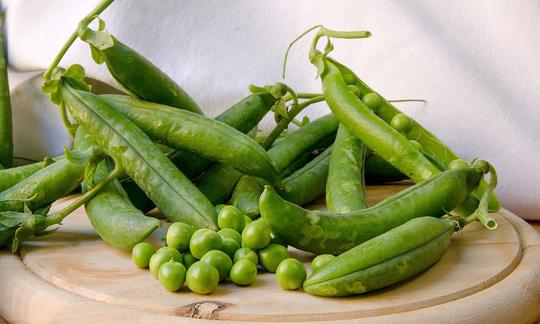

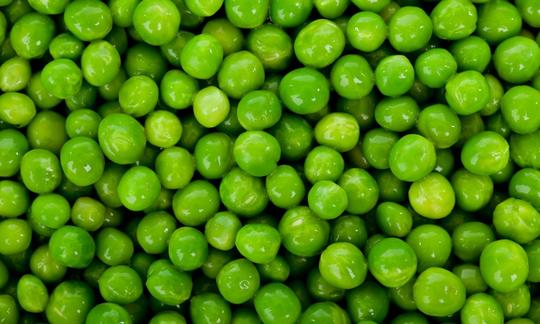

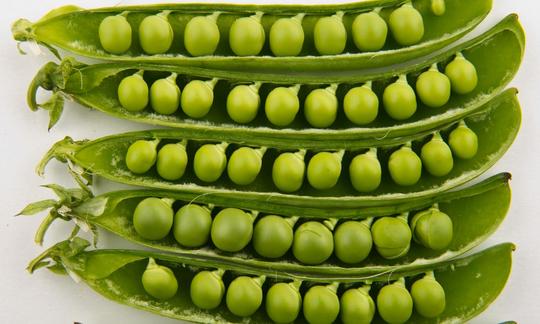

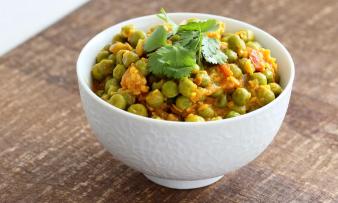
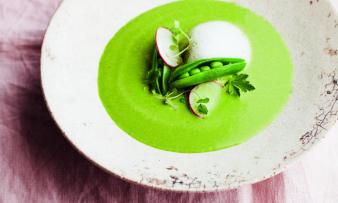






Comments